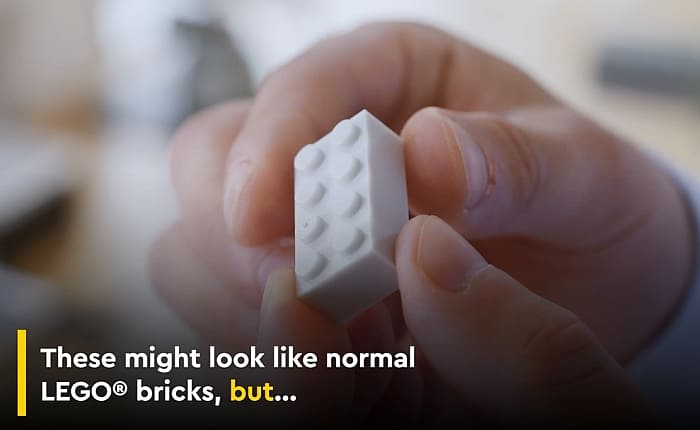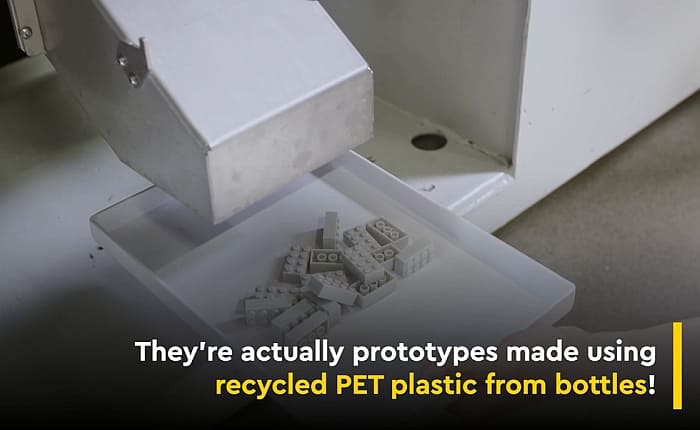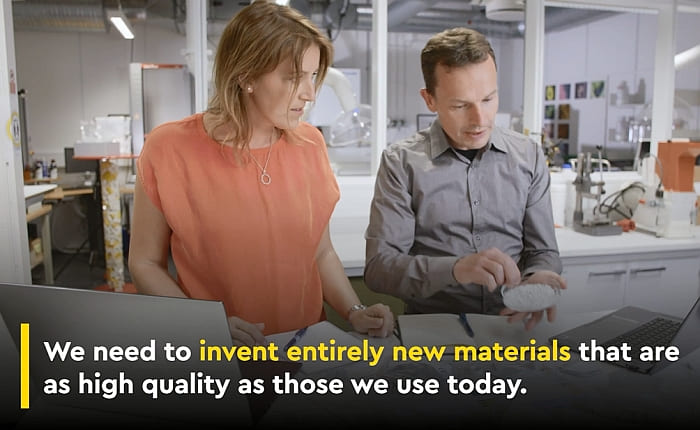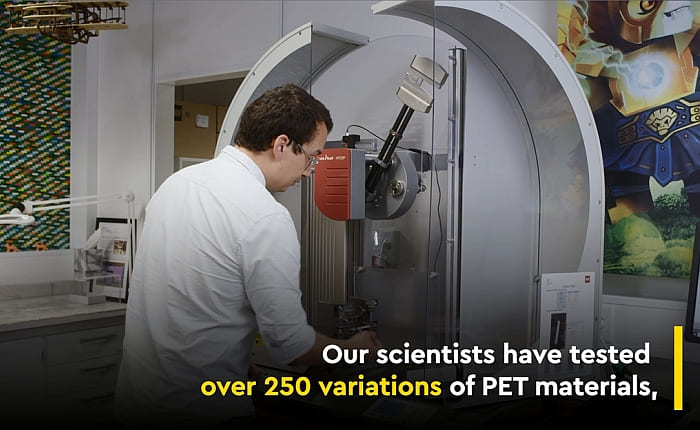The LEGO Group yesterday unveiled a prototype LEGO brick made from recycled plastic, the latest step in its journey to make LEGO products from sustainable materials.

The new prototype, which uses PET plastic from discarded bottles, is the first brick made from a recycled material to meet the company’s strict quality and safety requirements.


A team of more than 150 people are working to find sustainable solutions for LEGO products. Over the past three years, materials scientists and engineers tested over 250 variations of PET materials and hundreds of other plastic formulations. The result is a prototype that meets several of their quality, safety, and play requirements – including clutch power.
UNCOMPROMISED QUALITY AND SAFETY
It will be some time before bricks made from a recycled material appear in LEGO product boxes. The team will continue testing and developing the PET formulation and then assess whether to move to the pilot production phase. This next phase of testing is expected to take at least a year.
Brooks said: “We know kids care about the environment and want us to make our products more sustainable. Even though it will be a while before they will be able to play with bricks made from recycled plastic, we want to let kids know we’re working on it and bring them along on the journey with us. Experimentation and failing is an important part of learning and innovation. Just as kids build, unbuild, and rebuild with LEGO bricks at home, we’re doing the same in our lab.”
The prototype is made from recycled PET sourced from suppliers in the United States that use US Food & Drug Administration (FDA) and European Food Safety Authority (EFSA) approved processes to ensure quality. On average, a one-liter plastic PET bottle provides enough raw material for ten 2×4 LEGO bricks.
JOURNEY TOWARDS MORE SUSTAINABLE PRODUCTS
The patent-pending material formulation increases the durability of PET to make it strong enough for LEGO bricks. The innovative process uses a bespoke compounding technology to combine the recycled PET with strengthening additives.


The recycled prototype brick is the latest development in making the LEGO Group’s products more sustainable. In 2020, the company announced it will begin removing single-use plastic from its boxes. In 2018, it began producing elements from bio-polyethylene (bio-PE), made from sustainably sourced sugarcane. Many LEGO sets contain elements made from bio-PE that is perfect for making smaller, softer pieces such as trees, branches, leaves, and accessories for minifigures. Bio-PE is not currently suitable for making harder, stronger elements such as the iconic LEGO bricks.
Brooks said: “We’re committed to playing our part in building a sustainable future for generations of children. We want our products to have a positive impact on the planet, not just with the play they inspire, but also with the materials we use. We still have a long way to go on our journey but are pleased with the progress we’re making.”
The LEGO Group’s focus on sustainable material innovation is just one of several different initiatives the company has in place to make a positive impact. The LEGO Group will invest up to US $400 million over three years to 2022 to accelerate its sustainability ambitions. For more information on how the LEGO Group wants to rebuild the world for the better, visit: LEGO.com/Sustainability
What do you think? How do you like the idea of LEGO bricks made of recycled plastic? Feel free to share your thoughts and discuss in the comment section below!
And you might also like to check out the following related posts:












I’m happy to see this, but I hope they test and retest for longevity before mass production.
Good endeavor. My question is what if the composition of plastic bottles changes. Lego will be left in a bind
I’m worried quality will deteriorate.
“Clutch Power”. So that’s an internal QC measurement, something like how strongly the bricks grip onto studs, i.e. hold together?
So the name of the “Clutch Powers” animated character was an inside joke PUN all along?
Indeedelidoo…
That’s nice. Recycling PET bottles is already how I sustain my daily food budget.
That is great news. This just proves that Lego is concerned about the environment and that they’re doing everything they can to make it safe and clean for all of us. Two thumbs up Lego way to go!😁👍👍.
I do understand why LEGO is 8nvesr7gating this, but I also find it interesting. I don’t know of anyone that throes away LEGO. James May quipped about it during his KEGO house episode, saying the only KEGO in landfills are the pieces sucked up by the vacuum. I still have my sets from the 1970s that my kids use for play.
Ah, “investigating”… Weird spelling there…
I just had a scary thought , actually it’s more a made up concept. What if they make these bricks that after a certain number of years they disintegrate and Lego stopped existing. As if to say “Lego ,what Lego? “That’s a scary thought, but, I know that won’t be true or happen.😞.
that is a scary thought … the proto type was white so i wonder if what they use to color the pieces is sustainable it probably is
If I recall correctly, ABS plastic tended to look milky white without any added coloring. Lego would regularly use red as a test color for prototype molds.
What’s new 1 year later w Legos journey on using plastics for Lego bricks ? Are the bricks still molded ABS & recycled PET ? Love the product !